Design Reboot Jonathan Blow 27 November 2007

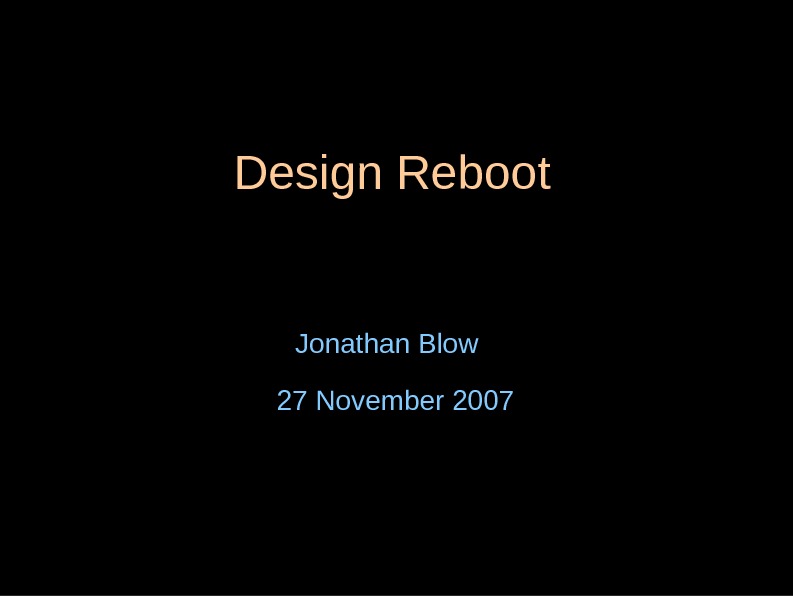

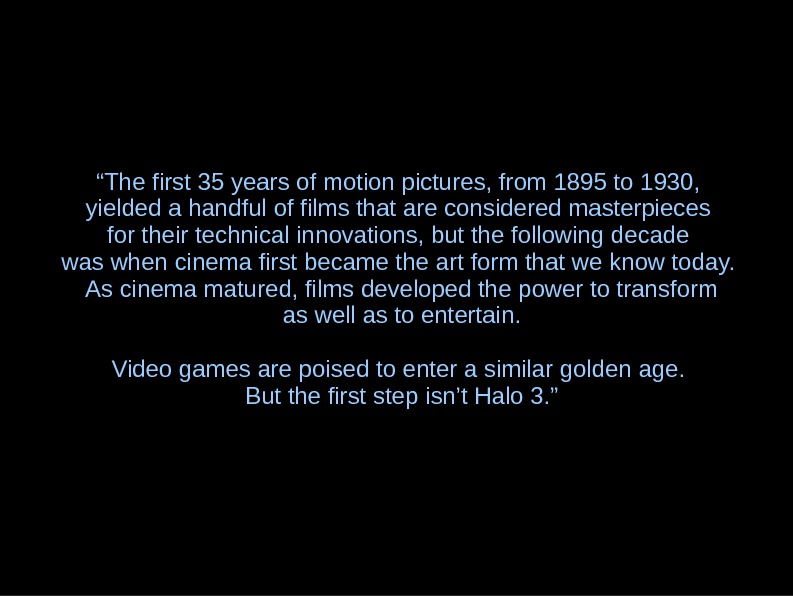
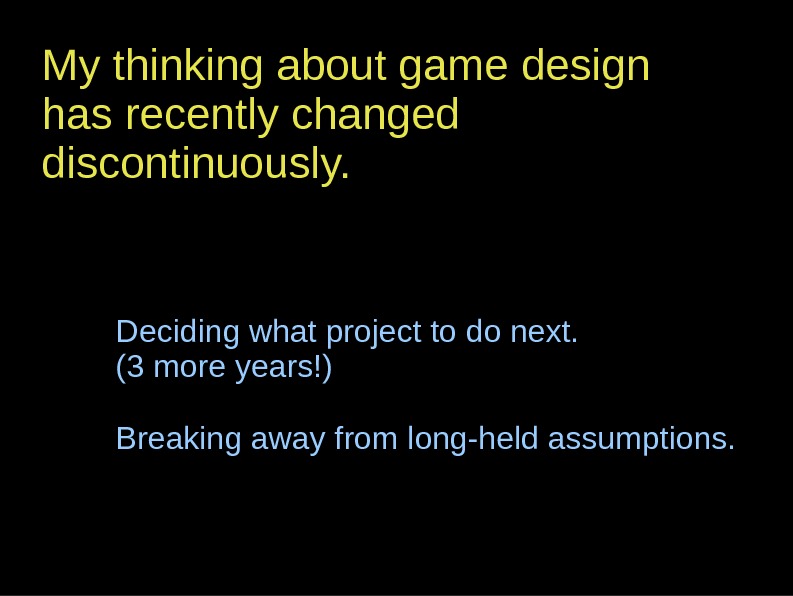

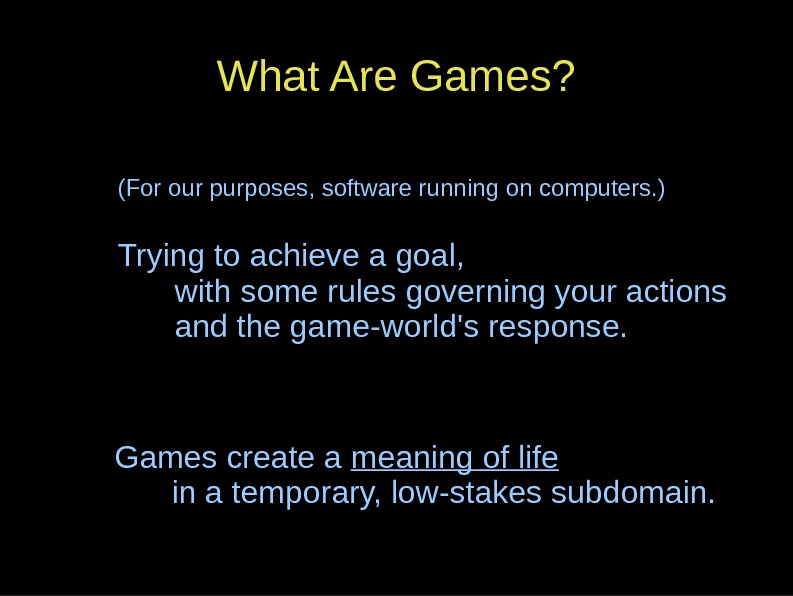
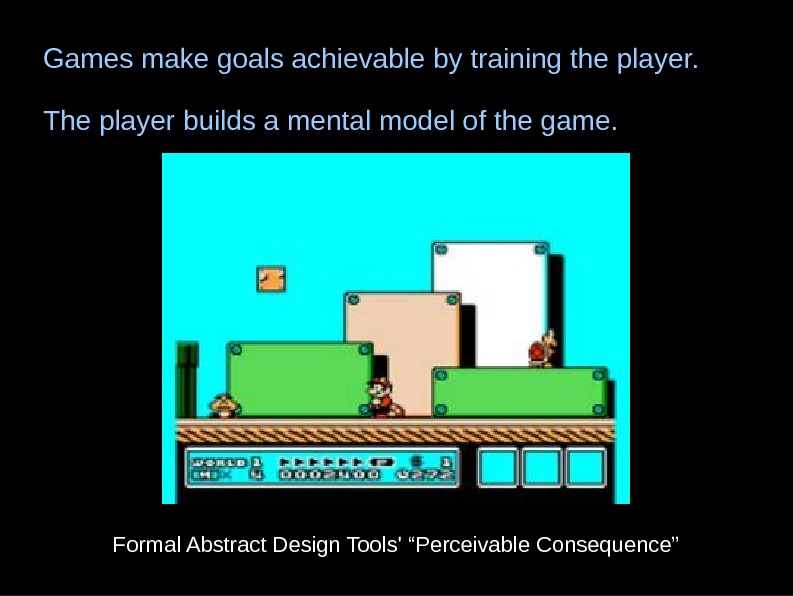
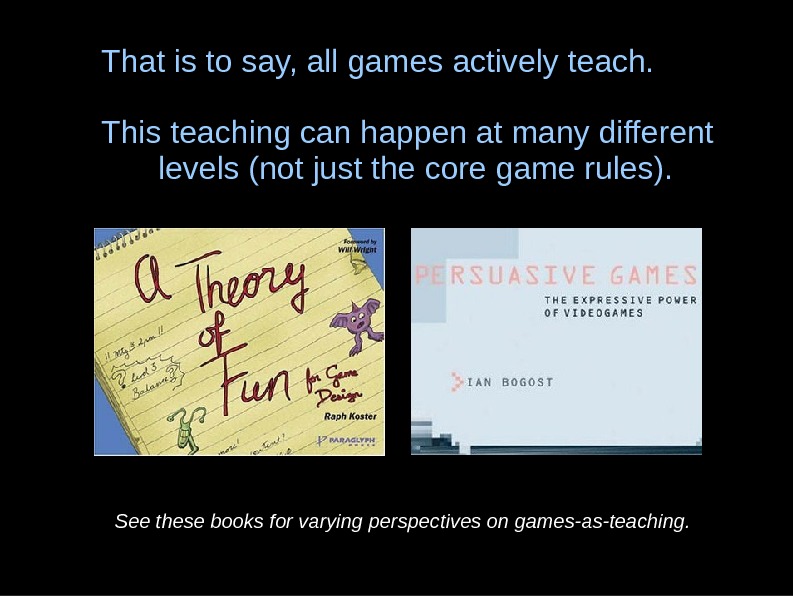
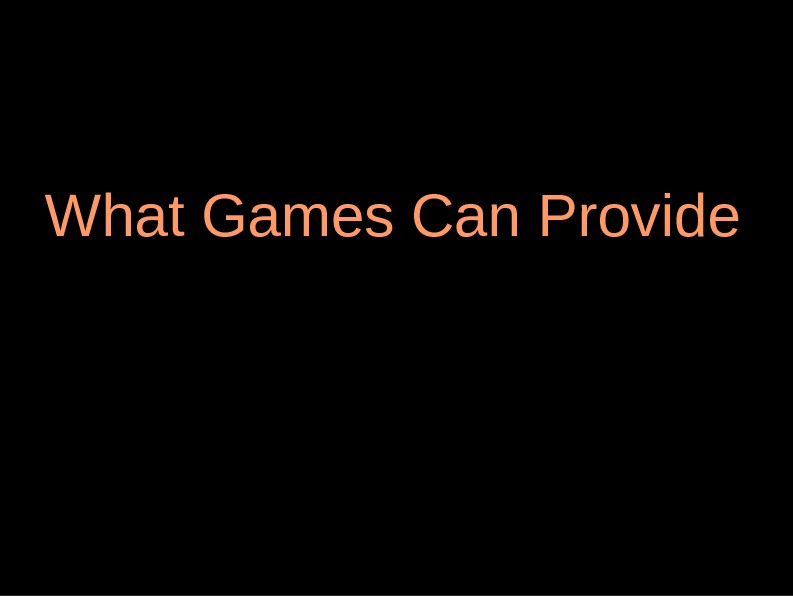

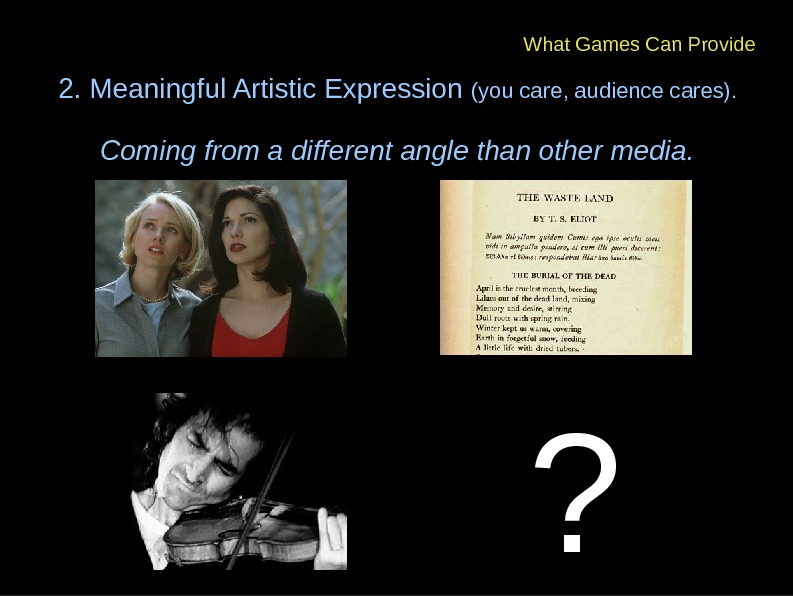
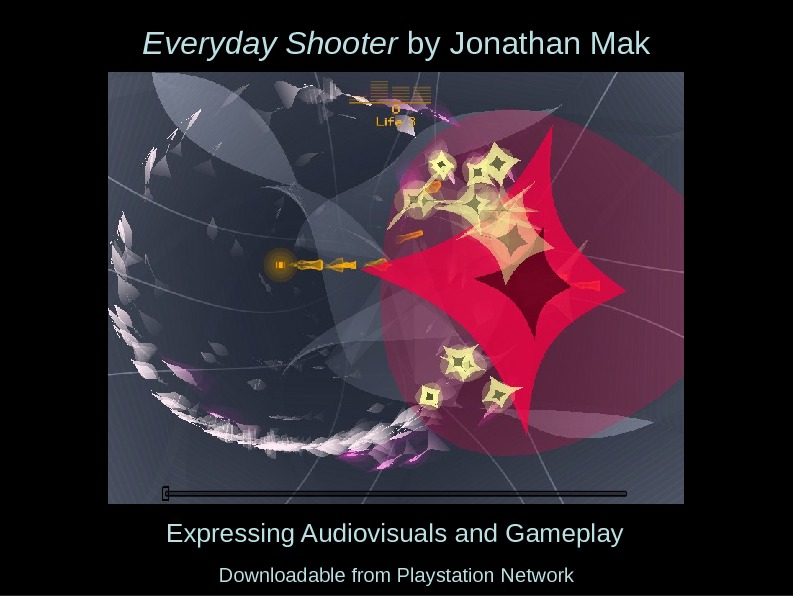


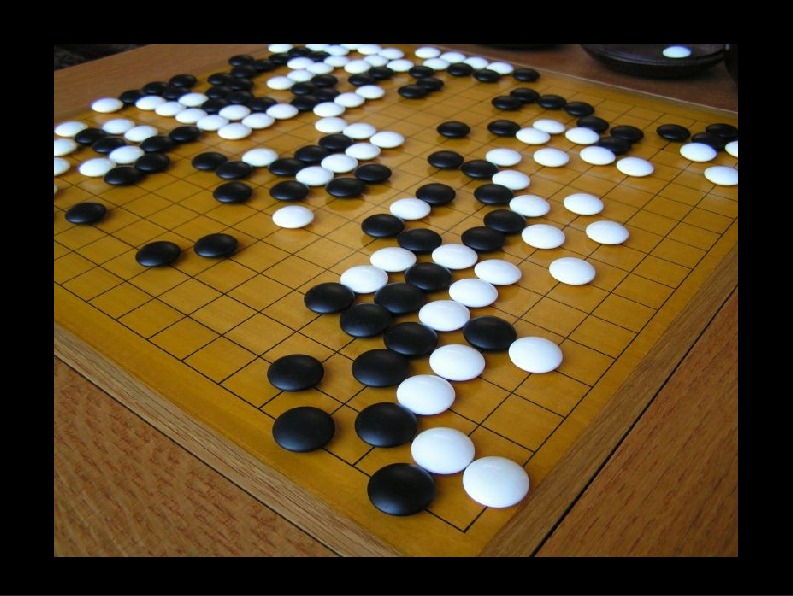


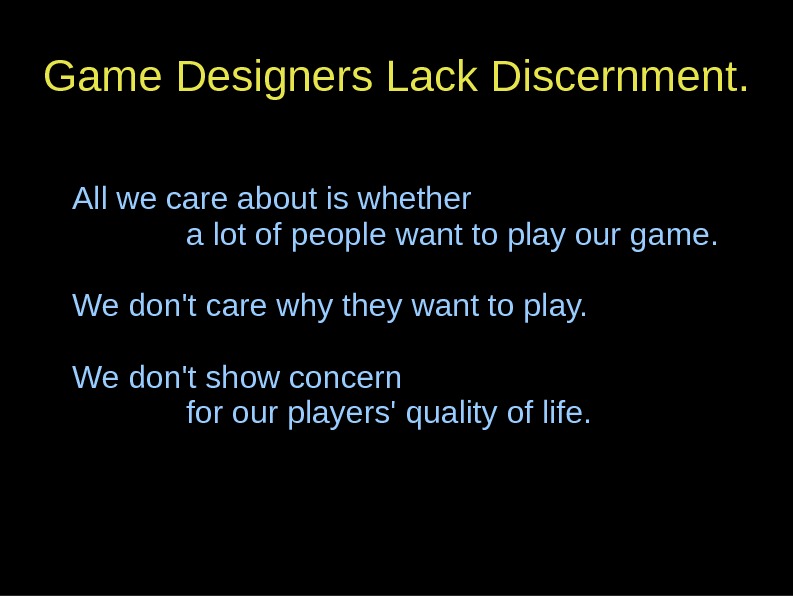

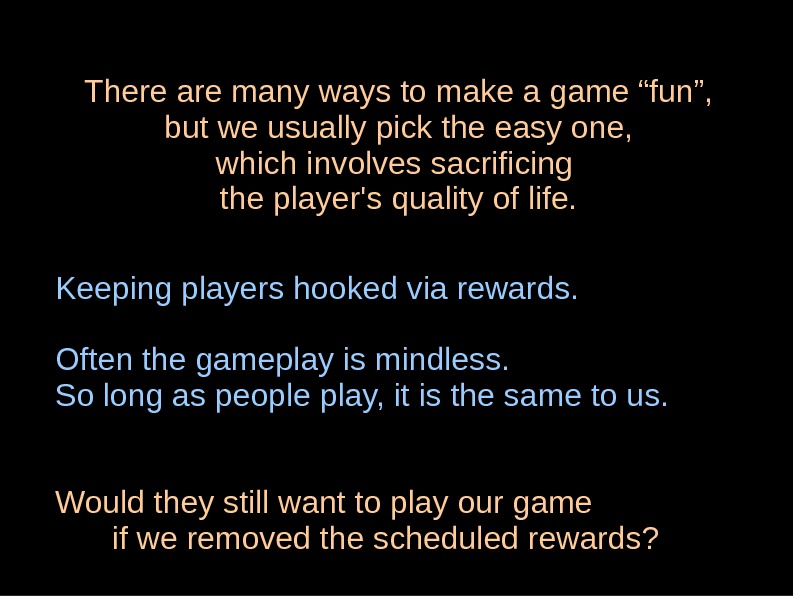
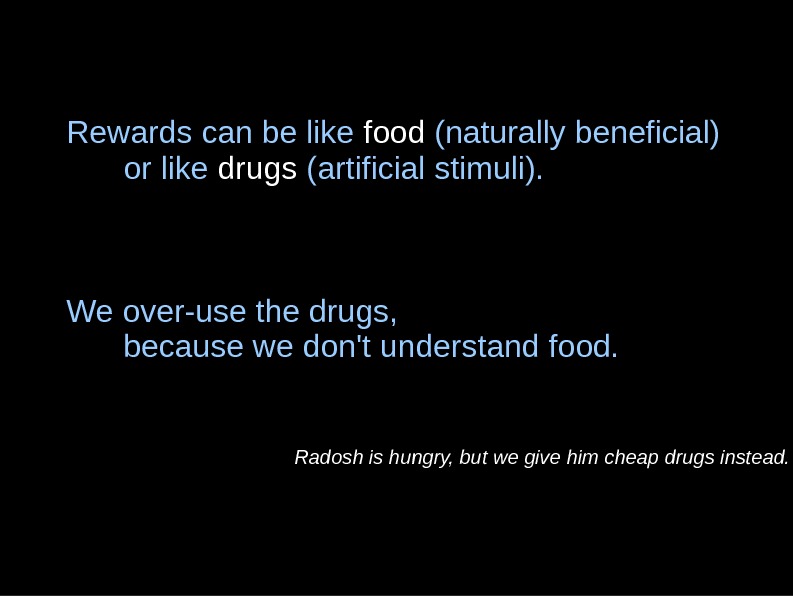

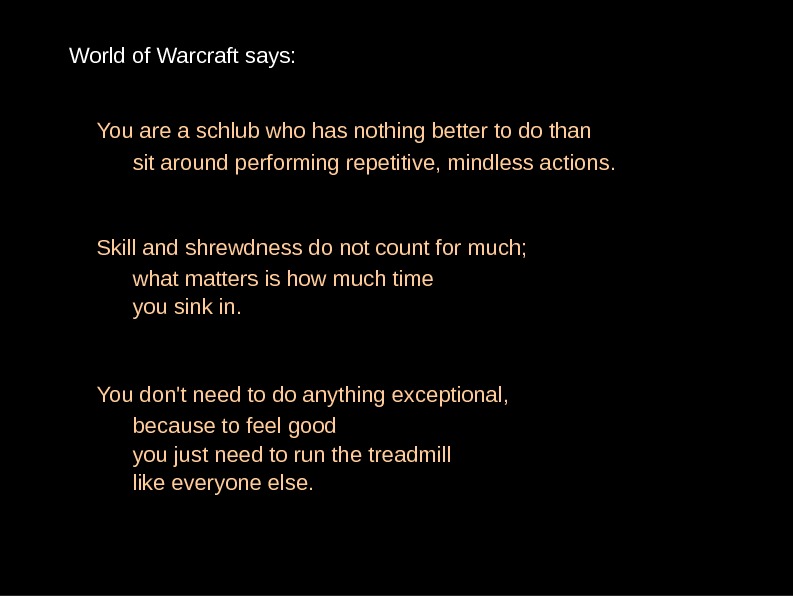
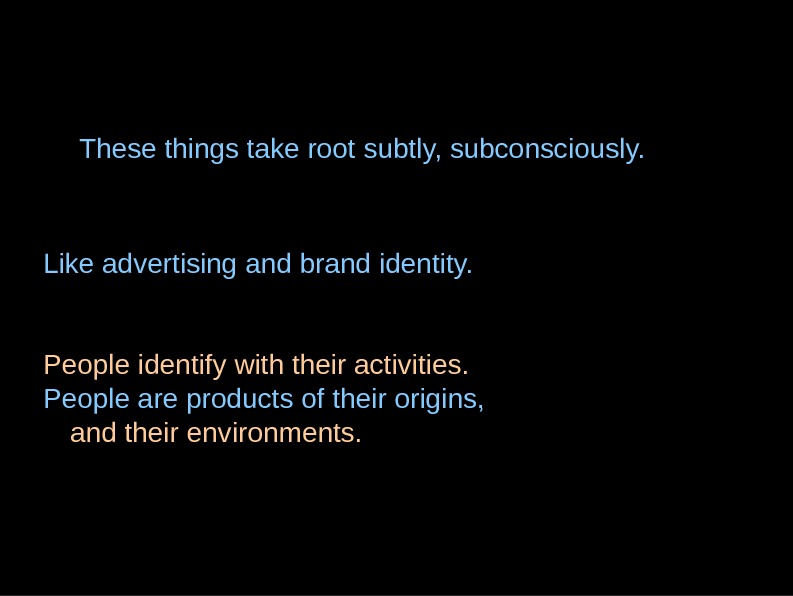






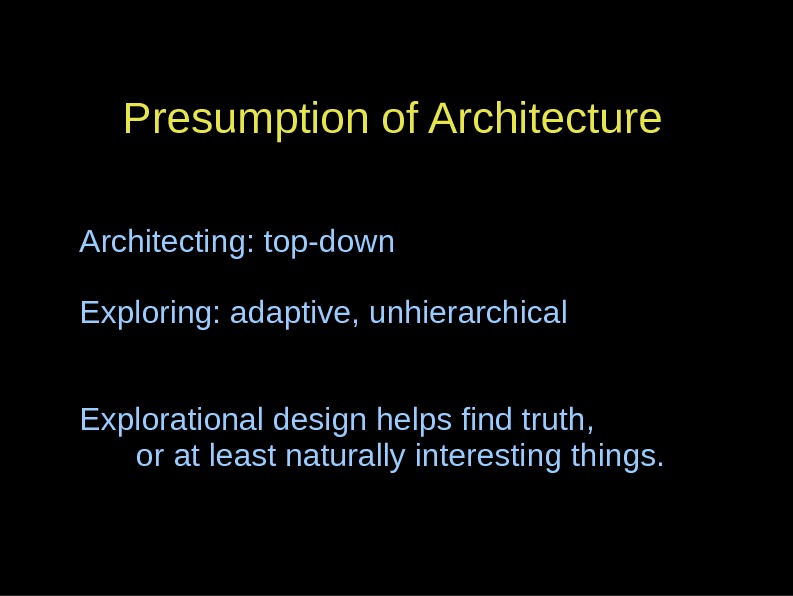

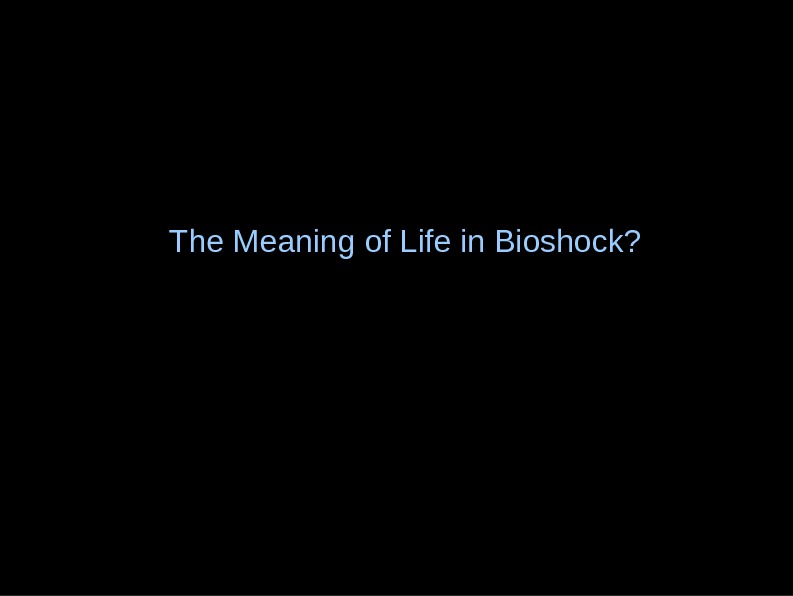
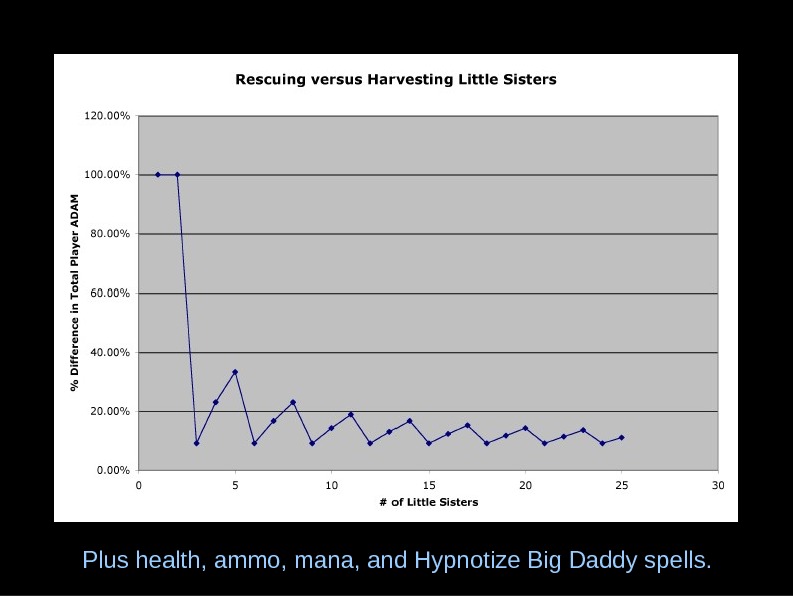


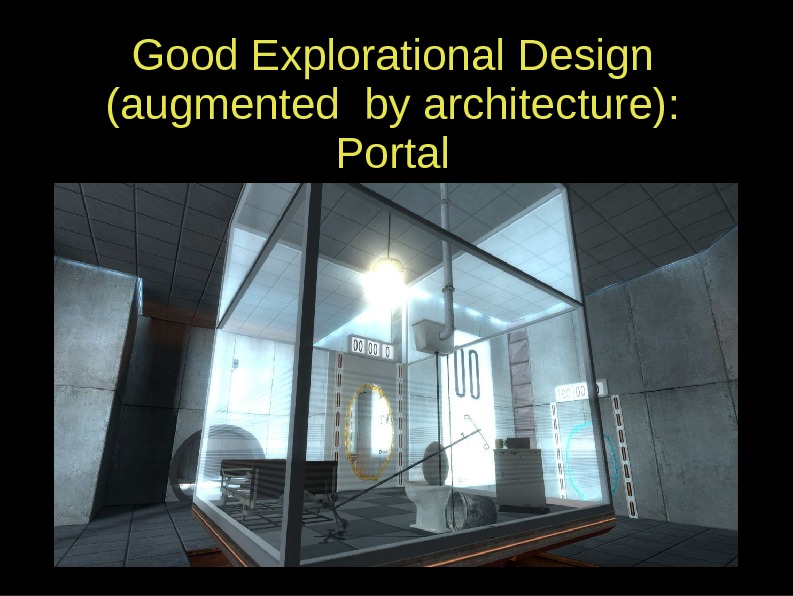
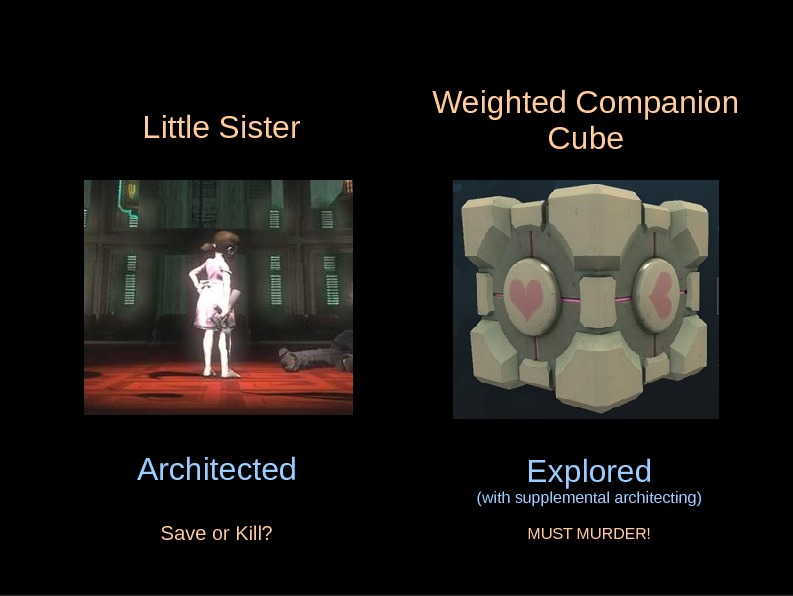

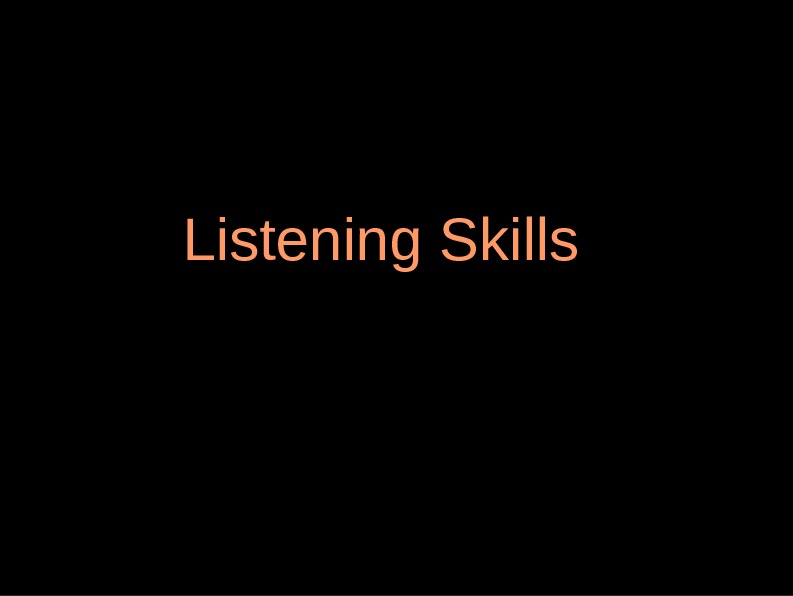
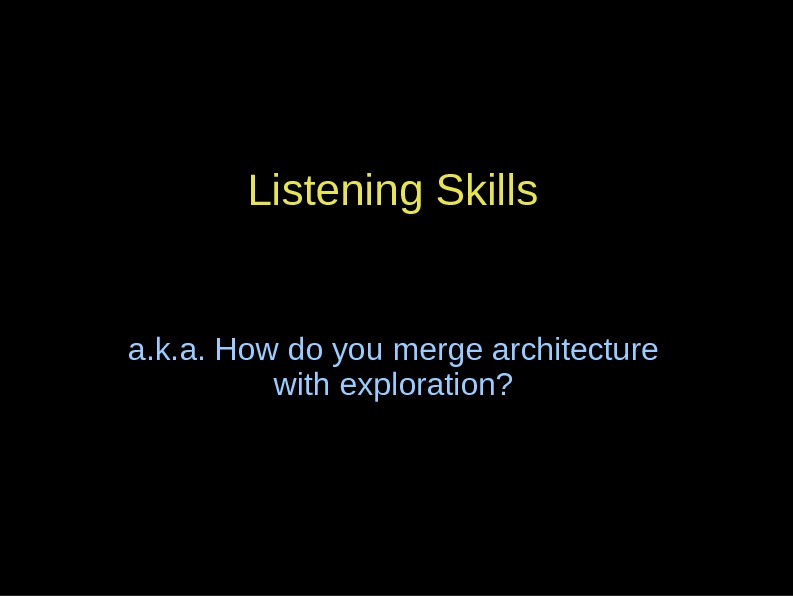

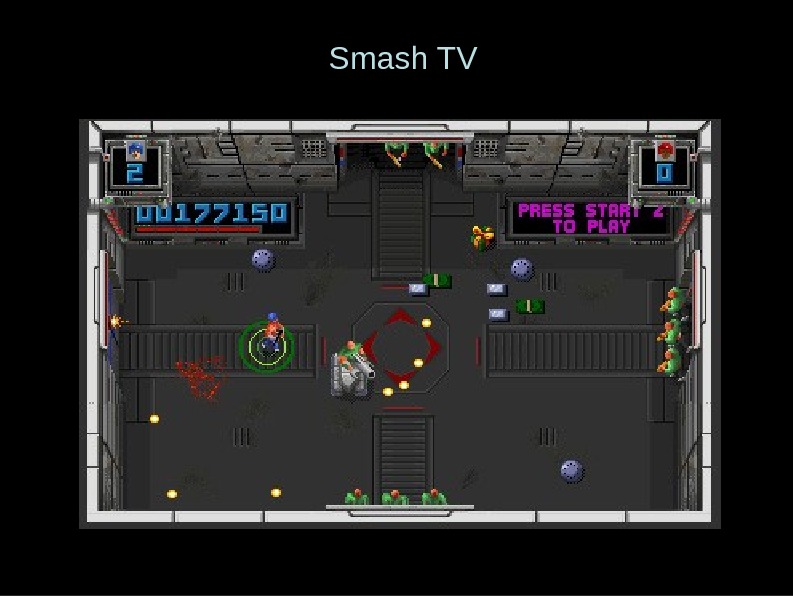

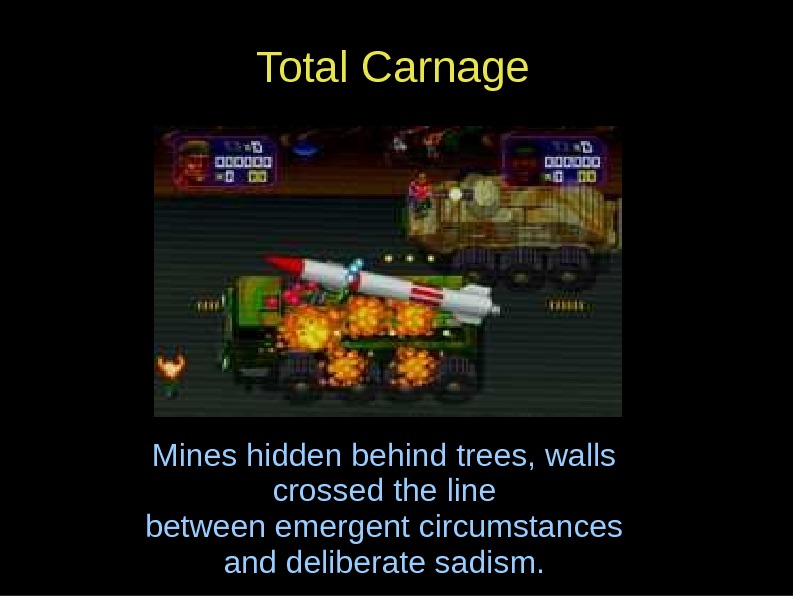
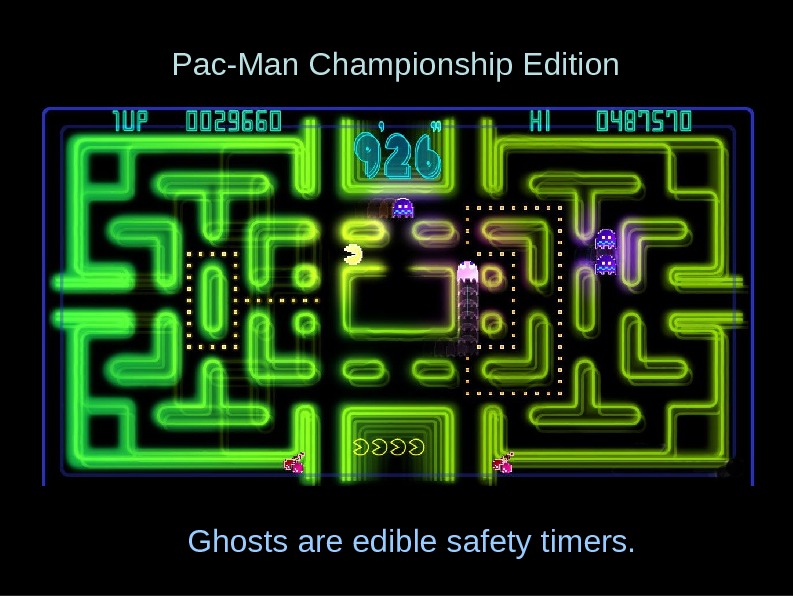
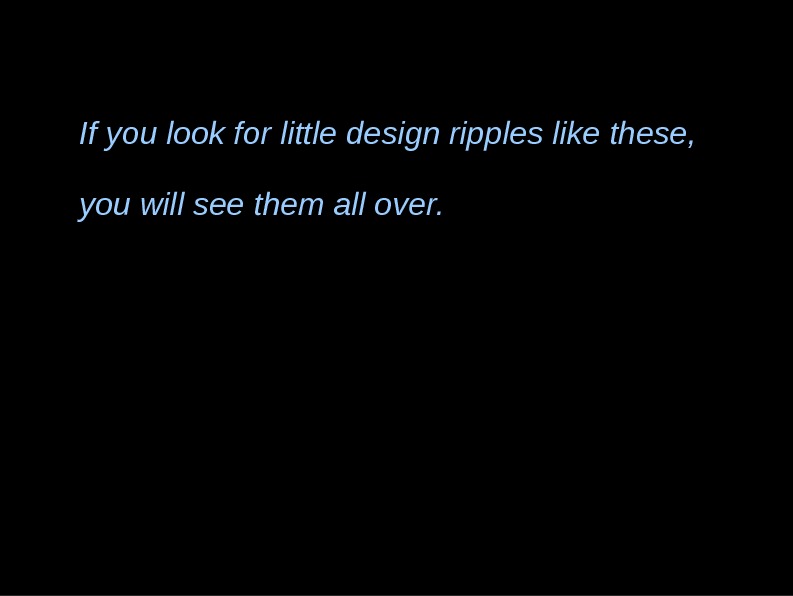
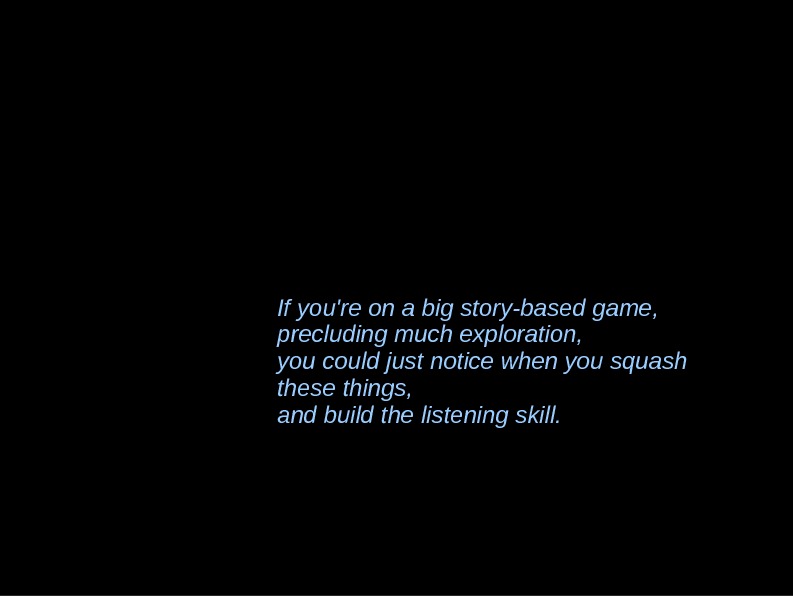
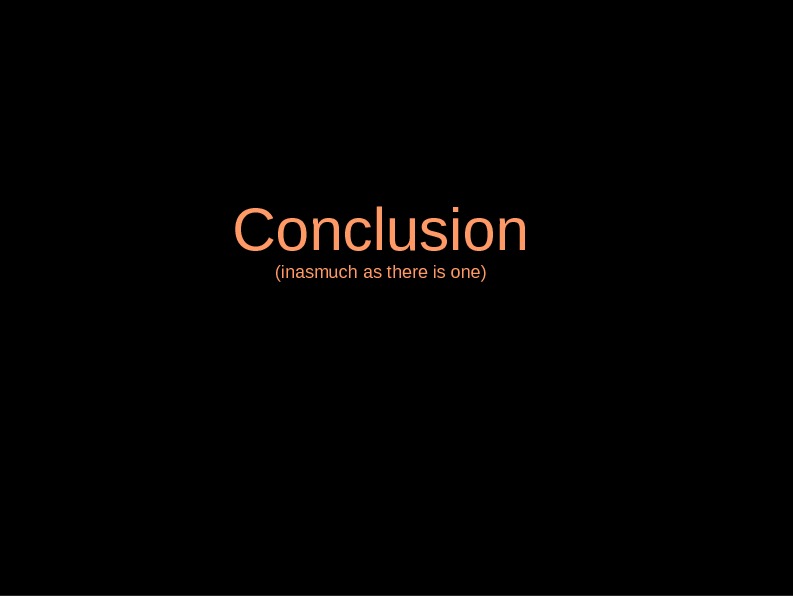
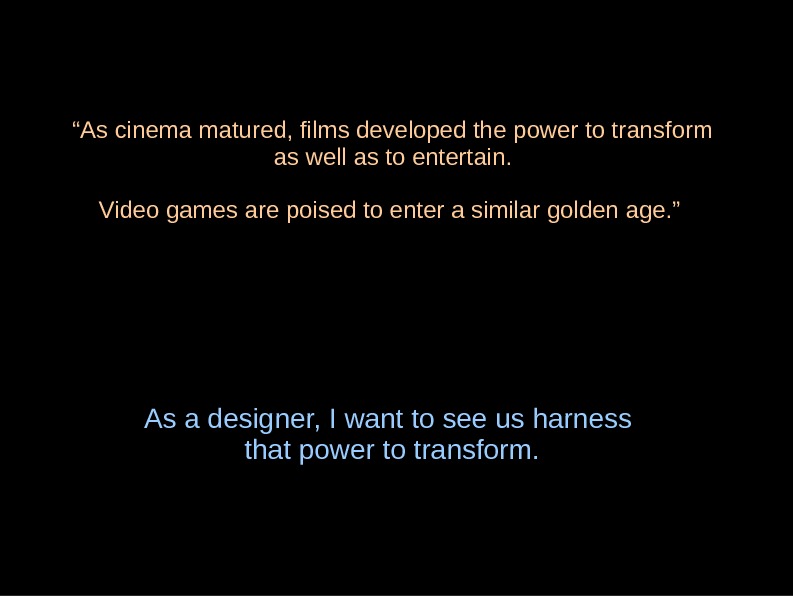
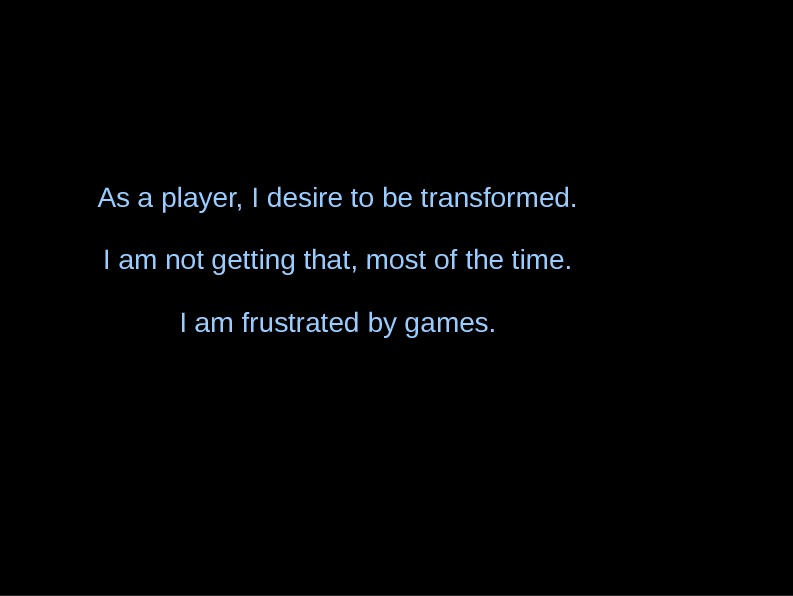

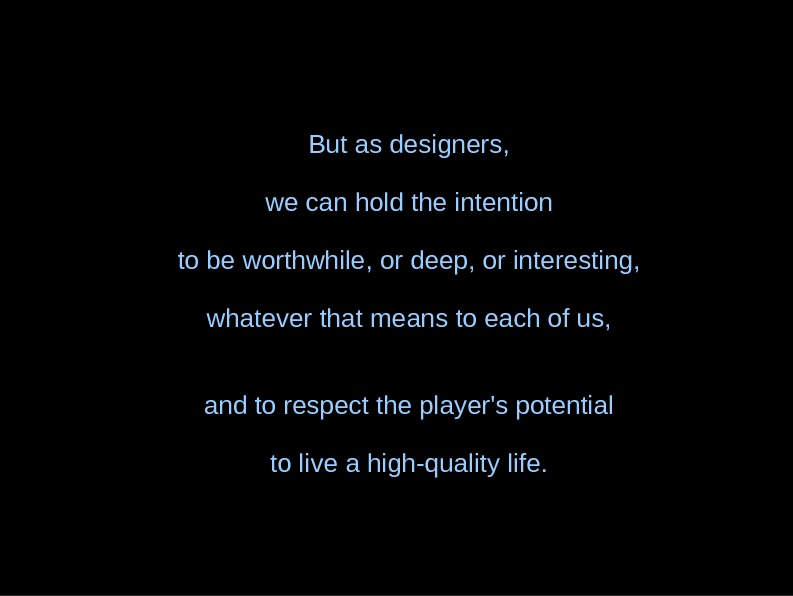
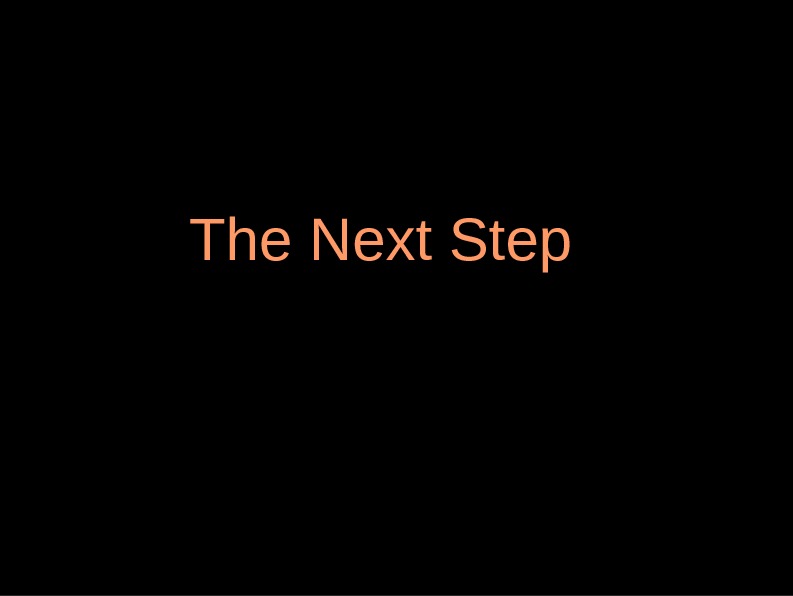
- Размер: 4.5 Mегабайта
- Количество слайдов: 54
Описание презентации Design Reboot Jonathan Blow 27 November 2007 по слайдам
 Design Reboot Jonathan Blow 27 November
Design Reboot Jonathan Blow 27 November
 «The formula followed by virtually all games is a steady progression toward victory: you accomplish tasks until you win. » «Like cinema, games will need to embrace the dynamics of failure, tragedy, comedy and romance. They will need to stop pandering to the player’s desire for mastery in favor of enhancing the player’s emotional and intellectual life. » Daniel Radosh, The New York Times , 28 September
«The formula followed by virtually all games is a steady progression toward victory: you accomplish tasks until you win. » «Like cinema, games will need to embrace the dynamics of failure, tragedy, comedy and romance. They will need to stop pandering to the player’s desire for mastery in favor of enhancing the player’s emotional and intellectual life. » Daniel Radosh, The New York Times , 28 September
 “ The first 35 years of motion pictures, from 1895 to 1930, yielded a handful of films that are considered masterpieces for their technical innovations, but the following decade was when cinema first became the art form that we know today. As cinema matured, films developed the power to transform as well as to entertain. Video games are poised to enter a similar golden age. But the first step isn’t Halo 3. ”
“ The first 35 years of motion pictures, from 1895 to 1930, yielded a handful of films that are considered masterpieces for their technical innovations, but the following decade was when cinema first became the art form that we know today. As cinema matured, films developed the power to transform as well as to entertain. Video games are poised to enter a similar golden age. But the first step isn’t Halo 3. ”
 My thinking about game design has recently changed discontinuously. Deciding what project to do next. (3 more years!) Breaking away from long-held assumptions.
My thinking about game design has recently changed discontinuously. Deciding what project to do next. (3 more years!) Breaking away from long-held assumptions.
 What are Games?
What are Games?
 What Are Games? (For our purposes, software running on computers. ) Trying to achieve a goal, with some rules governing your actions and the game-world’s response. Games create a meaning of life in a temporary, low-stakes subdomain.
What Are Games? (For our purposes, software running on computers. ) Trying to achieve a goal, with some rules governing your actions and the game-world’s response. Games create a meaning of life in a temporary, low-stakes subdomain.
 Games make goals achievable by training the player. The player builds a mental model of the game. Formal Abstract Design Tools’ “Perceivable Consequence”
Games make goals achievable by training the player. The player builds a mental model of the game. Formal Abstract Design Tools’ “Perceivable Consequence”
 That is to say, all games actively teach. This teaching can happen at many different levels (not just the core game rules). See these books for varying perspectives on games-as-teaching.
That is to say, all games actively teach. This teaching can happen at many different levels (not just the core game rules). See these books for varying perspectives on games-as-teaching.
 What Games Can Provide
What Games Can Provide
 1. Entertainment / Fantasy / Escapism I am not satisfied with only this. (Nor are many others. ) What Games Can Provide
1. Entertainment / Fantasy / Escapism I am not satisfied with only this. (Nor are many others. ) What Games Can Provide
 What Games Can Provide 2. Meaningful Artistic Expression (you care, audience cares). Coming from a different angle than other media. ?
What Games Can Provide 2. Meaningful Artistic Expression (you care, audience cares). Coming from a different angle than other media. ?
 Expressing Audiovisuals and Gameplay. Everyday Shooter by Jonathan Mak Downloadable from Playstation Network
Expressing Audiovisuals and Gameplay. Everyday Shooter by Jonathan Mak Downloadable from Playstation Network
 The Marriage by Rod Humble Expressing Real-Life Themes through Rules of Interaction Free download on the Internet.
The Marriage by Rod Humble Expressing Real-Life Themes through Rules of Interaction Free download on the Internet.
 3. A means of exploring the universe (for both the creators and the players). Systems are biased toward producing truth (or at least consistency). What Games Can Provide
3. A means of exploring the universe (for both the creators and the players). Systems are biased toward producing truth (or at least consistency). What Games Can Provide

 Games are Going to Be Huge.
Games are Going to Be Huge.
 Many people will be playing games. . . Games will heavily impact patterns of human thought, and thus what it means to be human. (as books and film already have. ) All games teach… what will we be teaching all these people?
Many people will be playing games. . . Games will heavily impact patterns of human thought, and thus what it means to be human. (as books and film already have. ) All games teach… what will we be teaching all these people?
 Game Designers Lack Discernment. All we care about is whether a lot of people want to play our game. We don’t care why they want to play. We don’t show concern for our players’ quality of life.
Game Designers Lack Discernment. All we care about is whether a lot of people want to play our game. We don’t care why they want to play. We don’t show concern for our players’ quality of life.
 Scheduled Rewards: Collectables, Unlockables, Advancing Story, Achievements MMOs have empty gameplay but keep players hooked with constant fake rewards. (“The Treadmill”).
Scheduled Rewards: Collectables, Unlockables, Advancing Story, Achievements MMOs have empty gameplay but keep players hooked with constant fake rewards. (“The Treadmill”).
 There are many ways to make a game “fun”, but we usually pick the easy one, which involves sacrificing the player’s quality of life. Keeping players hooked via rewards. Often the gameplay is mindless. So long as people play, it is the same to us. Would they still want to play our game if we removed the scheduled rewards?
There are many ways to make a game “fun”, but we usually pick the easy one, which involves sacrificing the player’s quality of life. Keeping players hooked via rewards. Often the gameplay is mindless. So long as people play, it is the same to us. Would they still want to play our game if we removed the scheduled rewards?
 Rewards can be like food (naturally beneficial) or like drugs (artificial stimuli). We over-use the drugs, because we don’t understand food. Radosh is hungry, but we give him cheap drugs instead.
Rewards can be like food (naturally beneficial) or like drugs (artificial stimuli). We over-use the drugs, because we don’t understand food. Radosh is hungry, but we give him cheap drugs instead.
 In pursuing ever-more players, the game industry exploits them in an unethical way. We don’t see it as unethical because we refuse to stop and think about what we are doing. All games teach. What does World of Warcraft teach?
In pursuing ever-more players, the game industry exploits them in an unethical way. We don’t see it as unethical because we refuse to stop and think about what we are doing. All games teach. What does World of Warcraft teach?
 World of Warcraft says: You are a schlub who has nothing better to do than sit around performing repetitive, mindless actions. Skill and shrewdness do not count for much; what matters is how much time you sink in. You don’t need to do anything exceptional, because to feel good you just need to run the treadmill like everyone else.
World of Warcraft says: You are a schlub who has nothing better to do than sit around performing repetitive, mindless actions. Skill and shrewdness do not count for much; what matters is how much time you sink in. You don’t need to do anything exceptional, because to feel good you just need to run the treadmill like everyone else.
 These things take root subtly, subconsciously. Like advertising and brand identity. People identify with their activities. People are products of their origins, and their environments.
These things take root subtly, subconsciously. Like advertising and brand identity. People identify with their activities. People are products of their origins, and their environments.
 Natural Rewards (reinforced by artificial rewards) Manveer Heir on Clint Hocking’s blog: “ The brilliance in Portal lies not only in its simplicity (and excellent humor), but also in the moments of realization when you figure out a puzzle. No puzzle stumped me for more than five minutes in that game, yet I went from being COMPLETELY dumbfounded one moment to feeling like a genius the next, as I realized what I was supposed to do. ”
Natural Rewards (reinforced by artificial rewards) Manveer Heir on Clint Hocking’s blog: “ The brilliance in Portal lies not only in its simplicity (and excellent humor), but also in the moments of realization when you figure out a puzzle. No puzzle stumped me for more than five minutes in that game, yet I went from being COMPLETELY dumbfounded one moment to feeling like a genius the next, as I realized what I was supposed to do. ”
 The primary challenge for mankind in this century Our actions create the environment, whether we intend this or not. global warming ozone holes air / water pollutants light pollution intellectual property digital rights control human rights safety leisure time fast transportation intellectual exchange economic mobility
The primary challenge for mankind in this century Our actions create the environment, whether we intend this or not. global warming ozone holes air / water pollutants light pollution intellectual property digital rights control human rights safety leisure time fast transportation intellectual exchange economic mobility
 When millions of people buy our game, we are pumping a (mental) substance into the (mental) environment. This is a public mental health issue. We have the power to shape humanity. How will we use it?
When millions of people buy our game, we are pumping a (mental) substance into the (mental) environment. This is a public mental health issue. We have the power to shape humanity. How will we use it?
 as an industry are we propagating the intellectual and emotional versions of this ?
as an industry are we propagating the intellectual and emotional versions of this ?
 When millions of people buy our game, think of the multiplier that acts on any small improvement we make.
When millions of people buy our game, think of the multiplier that acts on any small improvement we make.
 Architecting vs. Exploring
Architecting vs. Exploring
 Presumption of Architecture Architecting: top-down Exploring: adaptive, unhierarchical Explorational design helps find truth, or at least naturally interesting things.
Presumption of Architecture Architecting: top-down Exploring: adaptive, unhierarchical Explorational design helps find truth, or at least naturally interesting things.
 Big Daddy and Little Sister. Poorly-Architected Design: Bioshock
Big Daddy and Little Sister. Poorly-Architected Design: Bioshock
 The Meaning of Life in Bioshock?
The Meaning of Life in Bioshock?
 Plus health, ammo, mana, and Hypnotize Big Daddy spells.
Plus health, ammo, mana, and Hypnotize Big Daddy spells.
 “ A shooter must be well-balanced” (a very Architected idea). This conflicts badly with the supposed moral choice. The message delivered is: The designers of this game are trying to manipulate your emotions in a clumsy way.
“ A shooter must be well-balanced” (a very Architected idea). This conflicts badly with the supposed moral choice. The message delivered is: The designers of this game are trying to manipulate your emotions in a clumsy way.
 Bioshock claims to be about altruism and humanity, but here is what it really teaches: Shoot everyone you see without warning, from as far away as possible. Only care for women and pre-teen girls. It’s a very weird game that we couldn’t proffer as an example to normal humans.
Bioshock claims to be about altruism and humanity, but here is what it really teaches: Shoot everyone you see without warning, from as far away as possible. Only care for women and pre-teen girls. It’s a very weird game that we couldn’t proffer as an example to normal humans.
 Good Explorational Design (augmented by architecture): Portal
Good Explorational Design (augmented by architecture): Portal
 Architected Save or Kill? Explored (with supplemental architecting) MUST MURDER!Little Sister Weighted Companion Cube
Architected Save or Kill? Explored (with supplemental architecting) MUST MURDER!Little Sister Weighted Companion Cube
 mkozlows on the Quarter to Three forums: “ It’s a measure of Bioshock’s quality that killing little girls actually made me, a jaded and manipulative gamer, feel guilty and slightly uncomfortable. But Portal actually made me feel guilty and slightly uncomfortable about throwing a crate into a pit. That’s pretty damn impressive. ”
mkozlows on the Quarter to Three forums: “ It’s a measure of Bioshock’s quality that killing little girls actually made me, a jaded and manipulative gamer, feel guilty and slightly uncomfortable. But Portal actually made me feel guilty and slightly uncomfortable about throwing a crate into a pit. That’s pretty damn impressive. ”
 Listening Skills
Listening Skills
 Listening Skills a. k. a. How do you merge architecture with exploration?
Listening Skills a. k. a. How do you merge architecture with exploration?
 It’s hard to listen if you are shouting all the time. If you are constantly reinforcing your architected design, you blind yourself to the possibilities being revealed.
It’s hard to listen if you are shouting all the time. If you are constantly reinforcing your architected design, you blind yourself to the possibilities being revealed.
 Smash TV
Smash TV
 Ambient Danger Gradient
Ambient Danger Gradient
 Total Carnage Mines hidden behind trees, walls crossed the line between emergent circumstances and deliberate sadism.
Total Carnage Mines hidden behind trees, walls crossed the line between emergent circumstances and deliberate sadism.
 Pac-Man Championship Edition Ghosts are edible safety timers.
Pac-Man Championship Edition Ghosts are edible safety timers.
 If you look for little design ripples like these, you will see them all over.
If you look for little design ripples like these, you will see them all over.
 If you’re on a big story-based game, precluding much exploration, you could just notice when you squash these things, and build the listening skill.
If you’re on a big story-based game, precluding much exploration, you could just notice when you squash these things, and build the listening skill.
 Conclusion (inasmuch as there is one)
Conclusion (inasmuch as there is one)
 As a designer, I want to see us harness that power to transform. “ As cinema matured, films developed the power to transform as well as to entertain. Video games are poised to enter a similar golden age. ”
As a designer, I want to see us harness that power to transform. “ As cinema matured, films developed the power to transform as well as to entertain. Video games are poised to enter a similar golden age. ”
 As a player, I desire to be transformed. I am not getting that, most of the time. I am frustrated by games.
As a player, I desire to be transformed. I am not getting that, most of the time. I am frustrated by games.
 What is worthwhile, or deep, or interesting? It is very subjective. Your ideas are different from mine.
What is worthwhile, or deep, or interesting? It is very subjective. Your ideas are different from mine.
 But as designers, we can hold the intention to be worthwhile, or deep, or interesting, whatever that means to each of us, and to respect the player’s potential to live a high-quality life.
But as designers, we can hold the intention to be worthwhile, or deep, or interesting, whatever that means to each of us, and to respect the player’s potential to live a high-quality life.
 The Next Step
The Next Step

